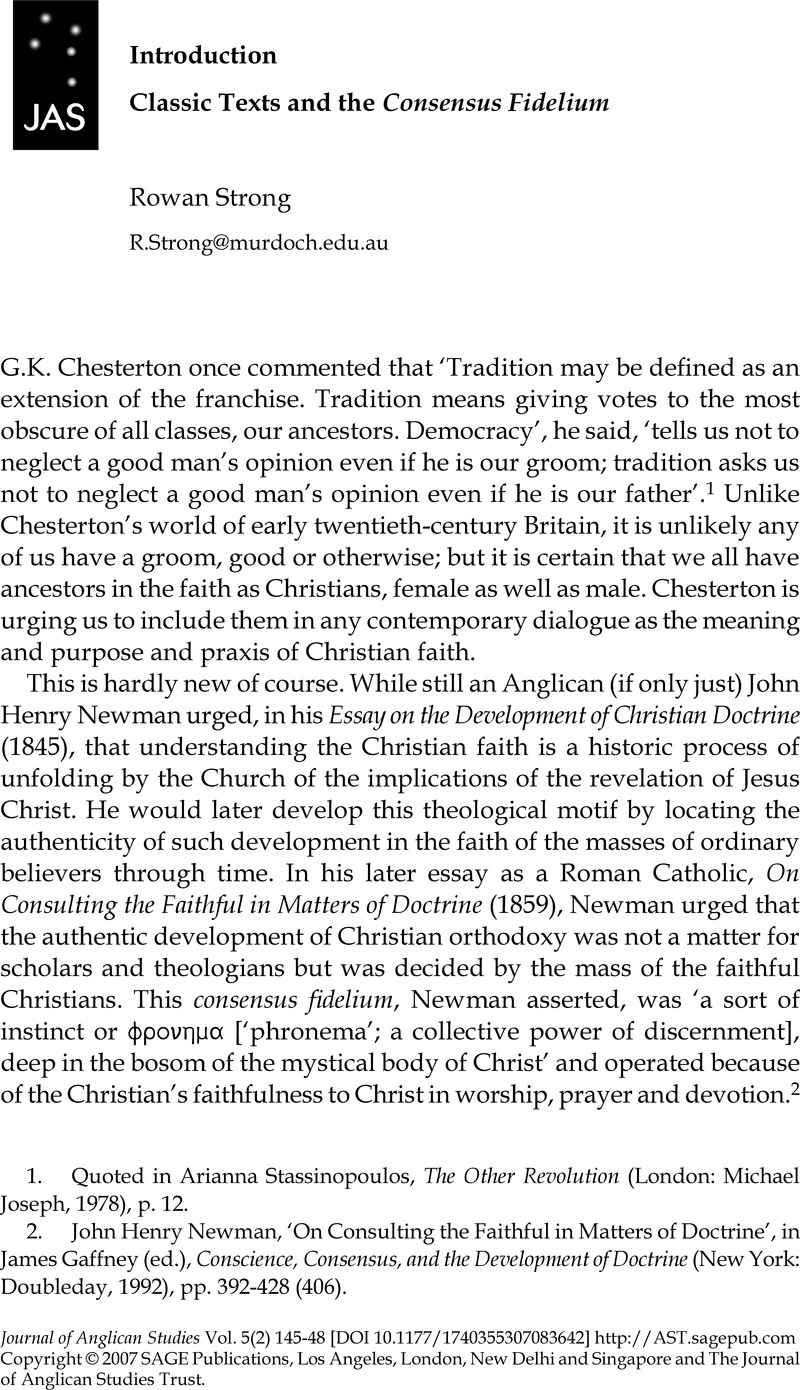No CrossRef data available.
Article contents
Introduction: Classic Texts and the Consensus Fidelium
Published online by Cambridge University Press: 05 January 2009
Abstract

Information
- Type
- Introduction
- Information
- Copyright
- Copyright © SAGE Publications (Los Angeles, London, New Delhi and Singapore) and The Journal of Anglican Studies Trust 2007
References
1. Quoted in Stassinopoulos, Arianna, The Other Revolution (London: Michael Joseph, 1978), p. 12.Google Scholar
2. Newman, John Henry, ‘On Consulting the Faithful in Matters of Doctrine’, in Gaffney, James (ed.), Conscience, Consensus, and the Development of Doctrine (New York: Doubleday, 1992), pp. 392–428 (406).Google Scholar
3. Pelikan, Jaroslav, The Vindication of Tradition (New Haven: Yale University Press, 1984), p. 30.Google Scholar
4. MacCulloch, Diarmid, Thomas Cranmer: A Life (New Haven: Yale University Press, 1996), pp. 414–15.Google Scholar
5. Munz, Peter, The Place of Hooker in the History of Thought (London: Routledge & Kegan Paul, 1952).Google Scholar

